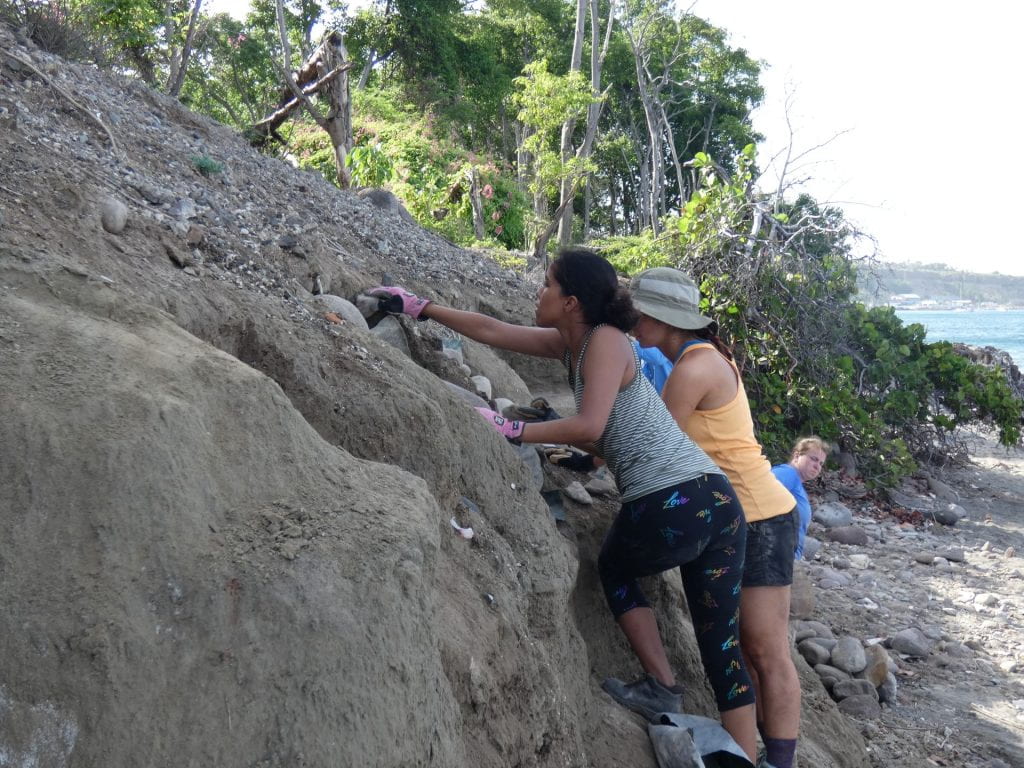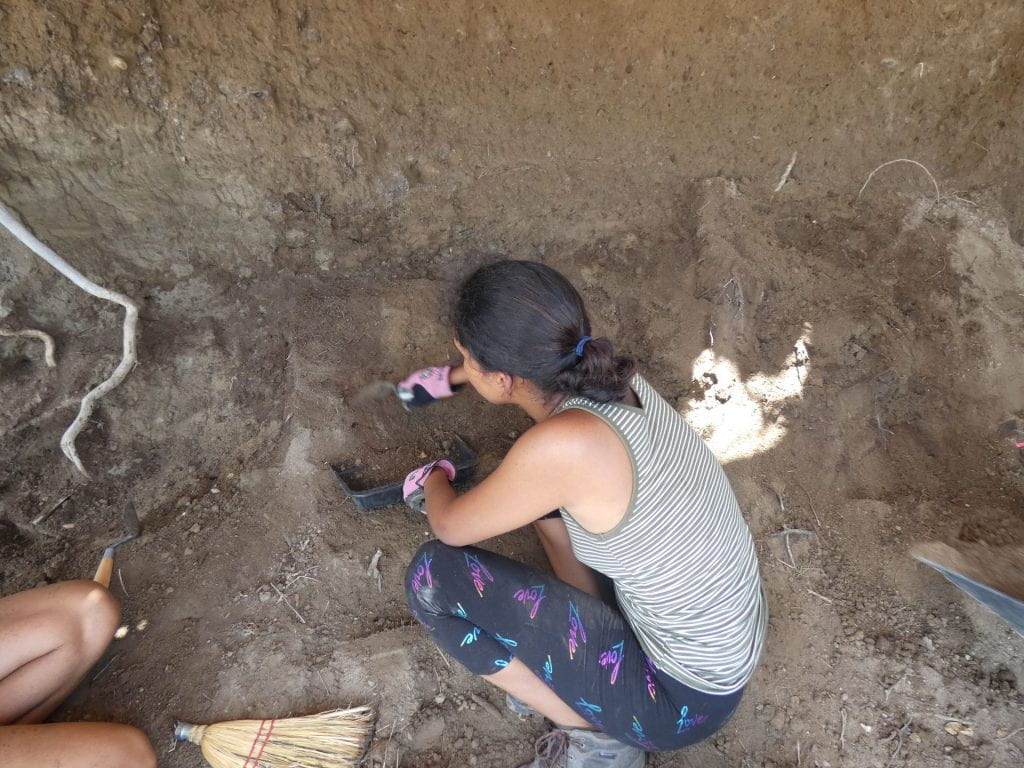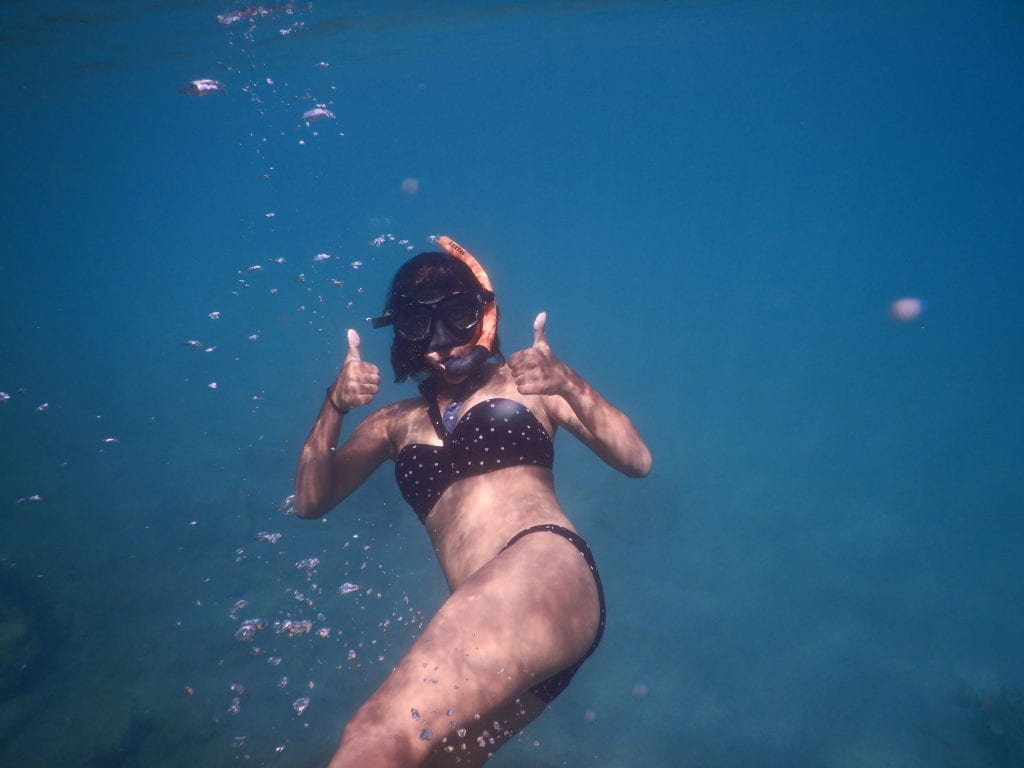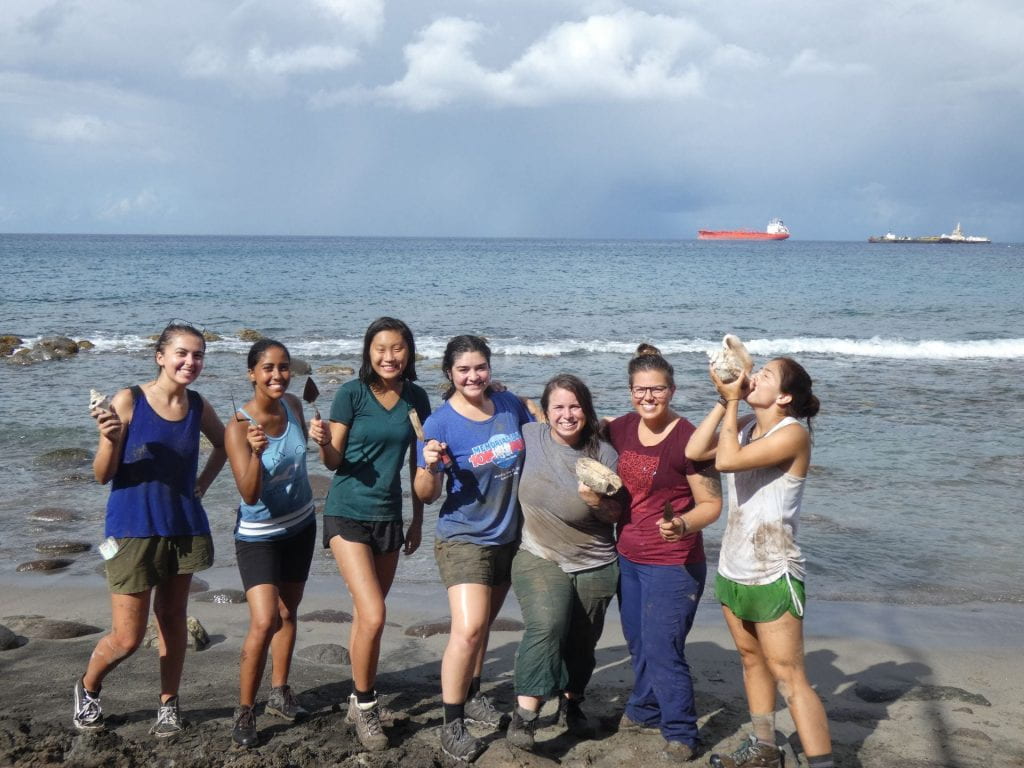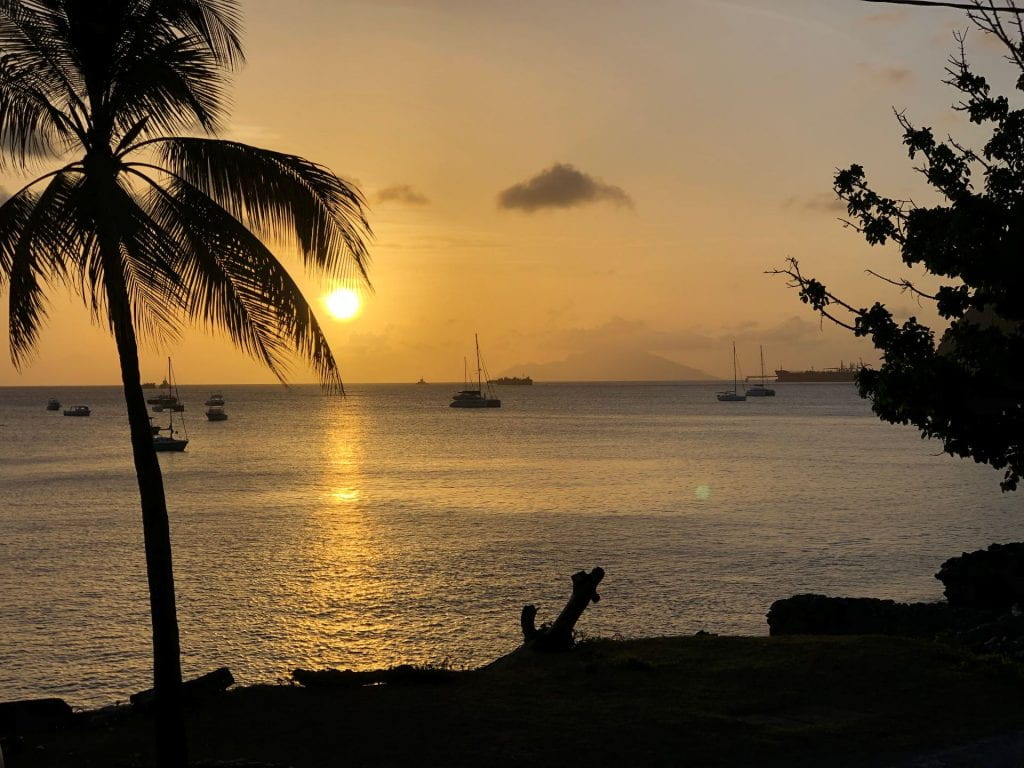By Jessyka Grell
This summer I had the amazing opportunity to study Globalization through Archaeology in the Caribbean on a tiny Dutch island called Sint Eustatius, also known as Statia. This experience was made possible through a grant from the National Science Foundation. Even though a lot of people have never heard of it (including my family who are from the Caribbean themselves), Statia holds a ton of history. Not only was it one of the main ports for trading goods and enslaved Africans, but Statia also provided America with guns and ammo during the Revolutionary War. This tiny island holds such a rich history that is directly related to American history, yet so many people have no idea it even exists.
On Statia, our team split into two groups: the archaeology team and the bioarcheology team. The archaeology team completed excavations at a sugar plantation and the bioarcheology team investigated an unmarked slave cemetery. Although I was a member of the bioarcheology team, I was able to participate in the sugar plantation excavations. This work allowed me to learn several excavation techniques that proved to be extremely helpful during my work at the cemetery.
At the cemetery, my team and I were able to excavate and recover the remains of African slaves before they were lost due to erosion. Examining and analyzing the remains and the artifacts found with them gave us a better understanding of their culture. It was an incredible experience to be able to give a voice to those underrepresented slave populations who have been ignored for far too long.
At one point, I was also given the opportunity to snorkel and explore the ruins of the submerged Lower Town. This was one of the best moments that I had while on Statia by far. Not only was I able to swim among all of the fish and sea turtles, but I was able to do this while looking at all of the ruins. This was a once in a lifetime experience that expanded my knowledge on underwater and maritime archaeology and allowed me to experience it first-hand.
During my off time from excavating, I either took walks to the beach or hung out with a Statian that I became good friends with. From hanging out with him, I was able to meet even more people that live on Statia and also see several beautiful spots on the island that I would not have had the chance to see otherwise. My favorite spot was at the top of a mountain where there is a gorgeous view of the entire island. There was no better way to wind down from a hard day of excavating than sitting on the mountain and watching the sunset with a friend.
My time on Statia was the best experience that I’ve ever had and one that I will never forget. I’ve made life-long friends with the people on my team while getting to dip my foot into a field that I’ve been in love with since the 7th grade. I am extremely blessed and grateful to have gotten this experience as the knowledge and training that I have acquired will stay with me for the rest of my life.

